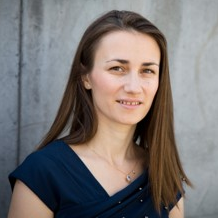Formulations for Wound Healing
A special issue of Pharmaceuticals (ISSN 1424-8247).
Deadline for manuscript submissions: closed (1 October 2021) | Viewed by 43293
Special Issue Editors
Interests: pre-formulation; solid dispersion; hydrogel; wound healing; semi-solid formulation; prevention of stomatitis; nanoparticle; grinding; DSC; PXRD
Special Issues, Collections and Topics in MDPI journals
Interests: hydrogel; pharmaceutical applications; bio medical applications; drug delivery system; tissue engineering
Special Issues, Collections and Topics in MDPI journals
Interests: wound healing; chronic wounds; hard-to-heal wounds; antimicrobial resistance; wound infection; antimicrobial agents; nanocomplexes; biopolymers
Special Issues, Collections and Topics in MDPI journals
Interests: toxcology; pharmacology; prevention and treatment of drug adverse events
Interests: drug delivery; pharmaceutical sciences; antimicrobial peptide
Special Issues, Collections and Topics in MDPI journals
Special Issue Information
Dear Colleagues,
In the United States, about 65 million people need wound treatment annually, so it can be said that the global need for wound treatment preparations is high. The market for wound dressings is expected to expand further in the future, as the number of patients with pressure ulcer increases due to the aging of society. Currently, "surgical treatment", "treatment with a dressing", "drug therapy", and the like are performed to treat wounds. Among them, "treatment with a dressing", consisting in covering wounds with a protection, is very common in the medical field. Therefore, wound dressings made of new materials that can be easily handled by anyone and are functional are highly desirable.
This Special Issue will focus on various aspects of wound treatment, such as (1) status quo of wound healing therapy, (2) pharmacological approaches to wound treatment, (3) biopharmaceutical approaches, (4) pharmaceutical approaches, (5) development of devices to improve wound healing. The overall perception of current wound treatment strategies will also be discussed.
Dr. Takehisa HanawaProf. Dr. Mitsutoshi Sato
Dr. Olivier Jordan
Guest Editors
Manuscript Submission Information
Manuscripts should be submitted online at www.mdpi.com by registering and logging in to this website. Once you are registered, click here to go to the submission form. Manuscripts can be submitted until the deadline. All submissions that pass pre-check are peer-reviewed. Accepted papers will be published continuously in the journal (as soon as accepted) and will be listed together on the special issue website. Research articles, review articles as well as short communications are invited. For planned papers, a title and short abstract (about 100 words) can be sent to the Editorial Office for announcement on this website.
Submitted manuscripts should not have been published previously, nor be under consideration for publication elsewhere (except conference proceedings papers). All manuscripts are thoroughly refereed through a single-blind peer-review process. A guide for authors and other relevant information for submission of manuscripts is available on the Instructions for Authors page. Pharmaceuticals is an international peer-reviewed open access monthly journal published by MDPI.
Please visit the Instructions for Authors page before submitting a manuscript. The Article Processing Charge (APC) for publication in this open access journal is 2900 CHF (Swiss Francs). Submitted papers should be well formatted and use good English. Authors may use MDPI's English editing service prior to publication or during author revisions.
Keywords
- Wound healing
- Status quo of wound healing therapy
- Biopharmaceutical approach to wound healing
- Pharmaceutical approach to wound healing
- Development of devices for wound healing










